What sewage rings to choose for waste well
The suburb implies a certain rejection of modern civilization benefits, but many owners seek to reduce this gap to a minimum. It is about autonomous, water supply and sewerage. The latter will be discussed in this article, in which we will explain why homeowners prefer plastic rings for sewage over concrete.
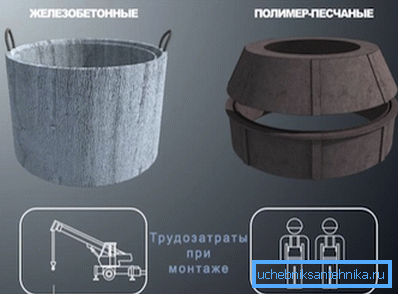
Materials for a waste well
Since the basis of such a system is a well, at the first stage it is necessary to choose the material from which it will have to be made. Thanks to the construction, you will have an autonomous sewer system, which is especially important when the central sewer is located far or not at all in the village. You must admit that today it’s impossible to imagine a residential house in the countryside without a drain well.
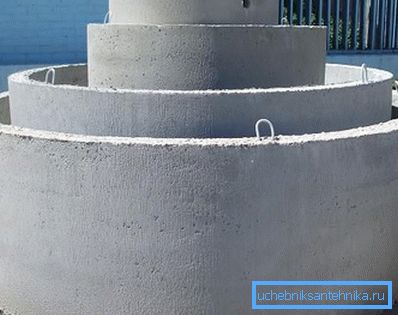
Previously, the main material for it was brick, but today the primacy is challenged by plastic and concrete rings, which have their own particular disadvantages. But, nevertheless, in the first case, the technologies advanced more deeply in development, offering rigid structures to customers.
Compare plastic and reinforced concrete
If you have decided to build an autonomous sewage system, but do not know which material to prefer for the sewer well, a comparative table will be given below. It will help you understand the mounting technology of rings from:
| Reinforced concrete |
|
| Plastics |
|
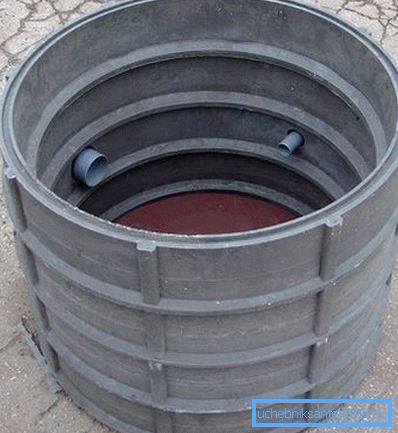
Additionally
- To install concrete rings O 1 m, you need to prepare a large pit. At the same time, this is not required for plastic, it can even be limited to O300 mm.
- Installation features:
- W / b of the well - it is required to make 2-4 holes in the lower ring, then a tray of cement is installed on the bottom, the solution is put on all the structures, and cement the places for pipelines. After that, you need to wait until the cement grabs and make a full waterproofing of the structure.
- plastic sewer well - it is placed in a pit and pipelines of any material are connected to it. On average, the process takes much less time than concrete work.
- Shaft Well Geometry. For polymer rings, it will take 10-15 minutes, but in the case of concrete, labor intensity increases greatly, which takes much more time and effort, making the process more expensive than the previous one.

Characteristics and advantages of polymer rings
- A relatively small mass of products, which, in contrast to concrete segments, is an advantage over them.
- The bottom can have a different configuration, which makes the decoupling of communications more convenient and comfortable.
- Height increase occurs by connecting the rings separately.
- There are various options for the maintenance of sewage wells, including built-in ladders and mouths.
- The material for the elements of the well is durable and wear-resistant plastic, for example, consisting of such polymers as polypropylene, cellophane and polyvinyl chloride, whose life is half a century. This ensures 100% hydrophobicity of the structure. A large range of use of materials (-70 - +50? C), which are not subject to corrosion and fireproof, resistant to freezing and thawing.
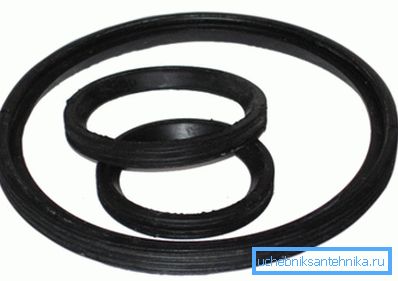
- The material is dense in structure, it withstands water pressure up to 5 m high, the joints do not leak and provide reliable supply of pipelines.
- Due to the low weight, installation speed is reduced, as well as transportation costs. You also do not need to involve in the work of special equipment. Installation costs without wide trenches, which significantly affects the cost of work.
Tip: you can install lightweight plastic rings with your own hands, especially with a compound in the form of special locks.
- Additional work during installation may be necessary if there is a need for welding. In this case, the instruction requires to take into account the specifics of the material and to follow certain recommendations of the process - to degrease the surfaces beforehand and maintain control over the temperature of extrusion welding. As a result, you get a complete tightness at the joints.
- Plastic does not need periodic additional tinting.
- The material ensures complete tightness and will not allow groundwater to enter the system.
- Self-cleaning is another plastic trump card. This is due to the low coefficient of roughness of the inner surface of the elements, which allows for very fast drainage. Therefore, the overgrowing of various deposits inside the well does not occur.
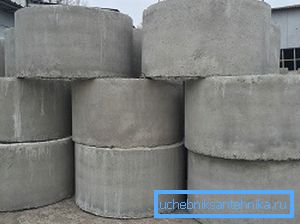
Installation
You do not need to pre-conduct waterproofing and antiseptic processing. Centering components and their fixation is due to the locks. Since the maximum weight of the plastic ring is 55 kg, loading and unloading operations can be carried out independently.
A set of standard well 2 m high consists of:
- plastic rings O 1 m - 8 pcs .;
- bottoms - 1 pc .;
- cone - 1 pc .;
- polymer manhole cover and body - 1 pc.
Tip: You can purchase each well separately.
No special tools are required for drilling holes. Then they do not need to be treated with protective compounds.
Conical elements are the most popular among consumers. They are reliable and can significantly save on reinforced concrete floor slabs.
It is only necessary to install a plastic cone junction on the upper well ring made of plastic and cover it with a hatch with a clip. The maximum load on the cone - 3 tons.
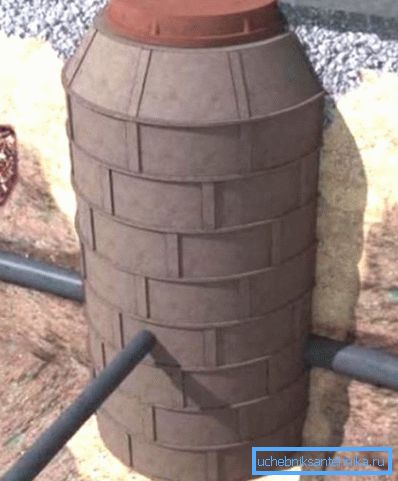
If you think that plastic can not withstand high pressure, this is an erroneous idea. The market of building materials is ready to offer a wide selection of plastic rings of various models, which will allow to solve the most complex tasks associated with autonomous sewage on a country site.
Conclusion
Thanks to modern technologies, it was possible to create an alternative to concrete well rings, offering consumers a plastic counterpart. Although their cost is somewhat more expensive, their characteristics and installation features level this out. This article described in detail their advantages and installation methods. The video in this article will help you find additional information on this topic.